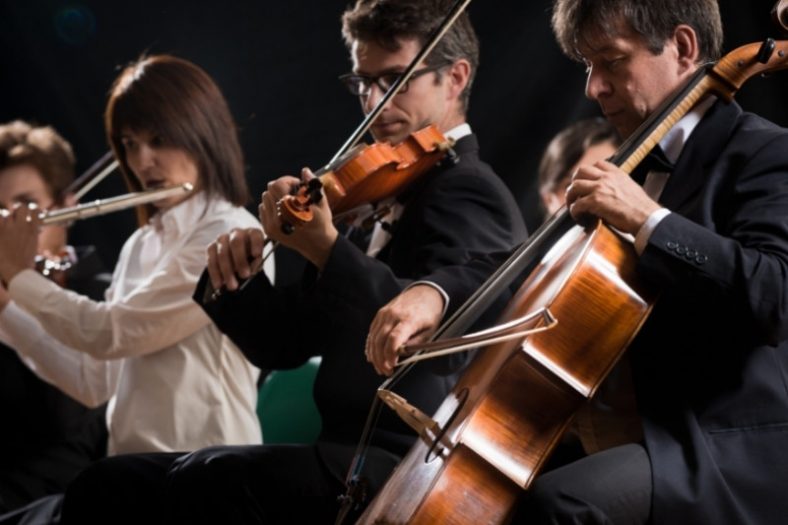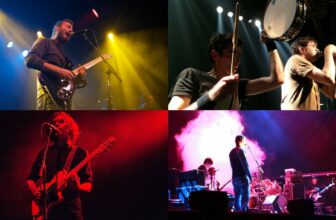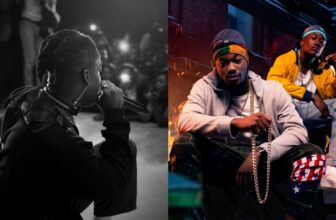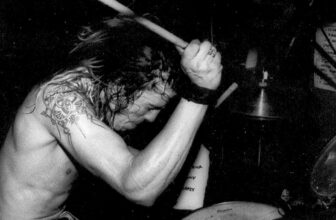12 Types of Classical Music

Music of the European tradition written using an established form is known as ‘classical’ music. The conventions often include parameters of not just pitch and musical key, but also dynamics, tempo, and mood.
Listening to classical music has multiple positive effects on the brain. Not only is it incredibly relaxing but it can also help the brain focus. Classical music can be categorized either based on the period they were composed or according to its form.
Let us take a look at some of the most important types of classical music there is.
Contents
1. Baroque Period
The period from 1600 to 1750 is known as ‘Baroque’ in art and music. Broadly, this was the period after the Renaissance period, and the music during this period was significantly different from the other eras.
Some of the most commonly used instruments during this period were string instruments such as the viola, violin, double bass, and cello. Other instruments also included the recorder, pipe organ, and sometimes trumpet. For percussion, the timpani were featured prominently along with castanets and snare drums.
Baroque music consisted of layered and complex melodies, monodies, dynamics, etc. This period saw not just famous composers but also the development of tonality in music. The use of musical keys and scales used during this period are practiced to date when composing melodies.
Notable composers of this period were Antonio Vivaldi, Georg Friedrich Händel, Johann Pachelbel, and Johann Sebastian Bach.
2. Classical Period
Although ‘classical’ music refers to a broad umbrella of music, the ‘Classical’ period is between the mid-1700s till early 1820s. During this time the concept of a standard orchestra was developed. ‘Symphony’ as we will see later on was also created during the Classical period.
Additionally, forms of classical music such as ‘serenade’ and ‘opera’ blossomed and many of their conventions are practiced even today. Instruments from the Baroque period continued to be used but they were modernized. Adding valves to trumpets is one such example.
Joseph Haydn, Ludwig van Beethoven, Wolfgang Amadeus Mozart, and Antonio Salieri were prominent composers during this era.
3. Romantic Period
The ‘Romantic’ period is the time between 1850 to 1900, or broadly the 19th century. Breaking away from the norm of developing new forms or complex musicality, there was an emphasis on emotion and chromaticism.
The Romantic movement emerged as a result of the ‘Age Of Enlightenment’ and the music during this time had distinct themes, with focus dynamics and larger tonal gaps. Other common features include an increased tonal range and decreased emphasis on traditional musical conventions. Increased dissonance, and so forth.
While Ludwig van Beethoven is also considered a part of the Early Romantic period, other prominent composers during this period were Frédéric Chopin, Niccolò Paganini, Franz Schubert, Franz Liszt, Pyotr Ilyich Tchaikovsky, and Richard Wagner.
4. Modernist Period
Although many genres emerged in the 20th century, classical music continued to transform despite its decrease in popularity. The two main forms of classical music during this period were ‘impressionist’ (the 1890s) and ‘expressionist’ (late 1900s).
Modernist composers such as Pauline Oliveros, George Perle, and Toru Takemitsu broke away from the traditional ideas of tonality, structure, and even instrumentation.
To classify this period, musicologists believe that the emphasis is not on the period during which pieces were composed but rather on the attitude of the composer, who sought to transform the often rigid norms of classical music and make it more accessible to the listener.
5. Contemporary/Post-Modern
Classical music exists even today. While many musicians perform pieces composed during the Classical or even Baroque period, it would be incorrect to say that there have been no composers and compositions in the 21st century.
Today, classical music often comes to us in the form of film or television scores. While postmodern classical music upholds the idea of making the music more accessible to all people, it continues to defy the rigid norms of the earlier types of classical music.
Kaija Saariaho, Brian Eno, and John Adams are a few examples of Contemporary classical music composers.
6. Concerto
While classical music is primarily categorized according to the period they were composed, there are many different forms in which it is played. The ‘concerto’ is one such type.
This instrumental form was developed during the Baroque period and the composition has three main sections to it, a fast movement followed by a slow movement, and then another fast movement. It is written primarily for one solo instrument or vocals.
‘The Four Seasons’ by Antonio Vivaldi, ‘Piano Concerto No. 5’ by Ludwig van Beethoven, and Johannes Brahms’ ‘Violin Concerto No.1 in D Major’ are examples of concertos.
7. Sonata
A ‘sonata’ is a composition for a solo instrument or even a small group of instruments with two to four movements in the same or related musical key. According to music historians, while a ‘cantata’ (as we will see in the later sections) was written for and performed by choral voices, sonatas were composed exclusively for musical instruments.
Over the years the definition of a sonata has been interpreted by composers in many different ways but there is always a central theme to the composition and there are three major parts in its structure: an exposition, its development, and a recapitulation of the theme. Some sonatas may also have a coda.
Beethoven’s ‘Moonlight Sonata’, ‘Piano Sonata No.2 in B-Flat Minor’ by Chopin, and Brahms’ ‘Violin Sonata No.3 in D Minor’ are examples of some famous sonatas.
8. Suite
In the 17th and 18th centuries, classical music found a dancing partner. Music was often created to accompany a dance piece such as ballet. A ‘suite’ is a collection of shorter pieces for a dance, that is a part of a larger composition. These are linked tonally and like sonatas, they are a part of a theme of some sort. The origins of a suite can be traced as far back as the 14th century.
The Classical suite had four movements: ‘allemande’, ‘courante’, ‘sarabande’, and ‘gigue’. The order of these movements was fixed and in the later centuries, additional parts such as ‘minuet’ and ‘bourrée’ were added to them.
Examples of suites include Pyotr Ilyich Tchaikovsky’s ‘Swan Lake’ and ‘The Nutcracker’.
9. Oratorio
A large concert composition for soloists, orchestras, or choirs is known as ‘oratorio’. The themes are secular and composers drew inspiration from various biblical topics and figures. Among Christians, Protestant oratorios used stories from the bible whereas Catholics preferred the lives of saints.
Oratorios were an integral part of music during the medieval period and it is believed that they originated in Italy. They became popular as opera emerged.
The popularity of oratorios declined after the Baroque period but there was a renewed interest in the 20th century. Composers often extended the sacred theme to other religions such as Dinesh Subasinghe’s ‘Karuna Nadee’ and Dudley Buck’s ‘The Light of Asia’ which focussed on the life of Buddha and Buddhism.
‘La Passione di Gesù Cristo’ by Pietro Metastasio is an example of an early oratorio.
10. Symphony
Music composed for a large ensemble such as an orchestra with multiple movements is known as a ‘symphony’. Although there may be variations, symphonies generally have four main movements: an opening allegro, andante, minuet, and a closing allegro or sonata.
While symphonies are always performed by orchestras, some such as Beethoven’s ‘ Symphony No. 9’ also have vocal parts.
Symphonies first appeared in the 16th century (‘Sacrae Symphoniae’ by Giovanni Gabrieli) and thrived during the Romantic period.
Brahms, Mozart, Beethoven, Mahler, and Tchaikovsky are some of the most famous composers of symphonies.
11. Chamber Music
Composed for a small group of instruments, ‘chamber music’ was traditionally written for the chambers of palaces where they were originally performed. While chamber music is the opposite of orchestra in terms of the size of the ensemble, there are no solo instruments.
As the concept of the aristocracy was demolished, chamber music shifted from the confines of a room to performance venues. Today, many music societies across the world focus on the preservation and performance of chamber music.
Franz Schubert’s ‘String Quintet’ and ‘Trout Quintet’ are some examples of chamber music.
12. Opera
‘Opera’ refers to a form of theater or staged drama where the central focus is on the music. Vocals are an integral part of opera music and are sometimes accompanied by instruments. Although it is considered an integral part of classical music, opera is also a form of performing arts since it involves acting, dance, music, costumes, and different stage settings.
It originated in Italy during the 1500s and peaked in the 19th century under composers such as Richard Wagner and Giuseppe Verdi.
Unlike oratories, operas don’t always have a secular theme and they can often include topics such as history and mythology. There are plot devices such as romance, betrayal, and even tragedy.
‘The Barber of Seville’ by Gioachino Rossini, Wagner’s ‘Die Walküre, and ‘War and Peace’ by Sergei Prokofiev are examples of some famous operas.
Conclusion
Many of us are often intimidated by classical music because of the complexity of its nature. It has many forms and the evolution has been drastic over the different centuries. While this list is meant as a guide to the different kinds of classical music there is, it is important to remember that no matter what its structure or when it was composed, at the end of the day, it is meant to evoke emotions.
It is difficult to not see the influence of classical music on modern music. Many hit songs often borrow from or are influenced by classical music. If you don’t believe this, listen to Maroon 5’s ‘Memories’ followed by Pachelbel’s ‘Canon in D’!





